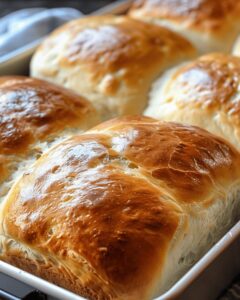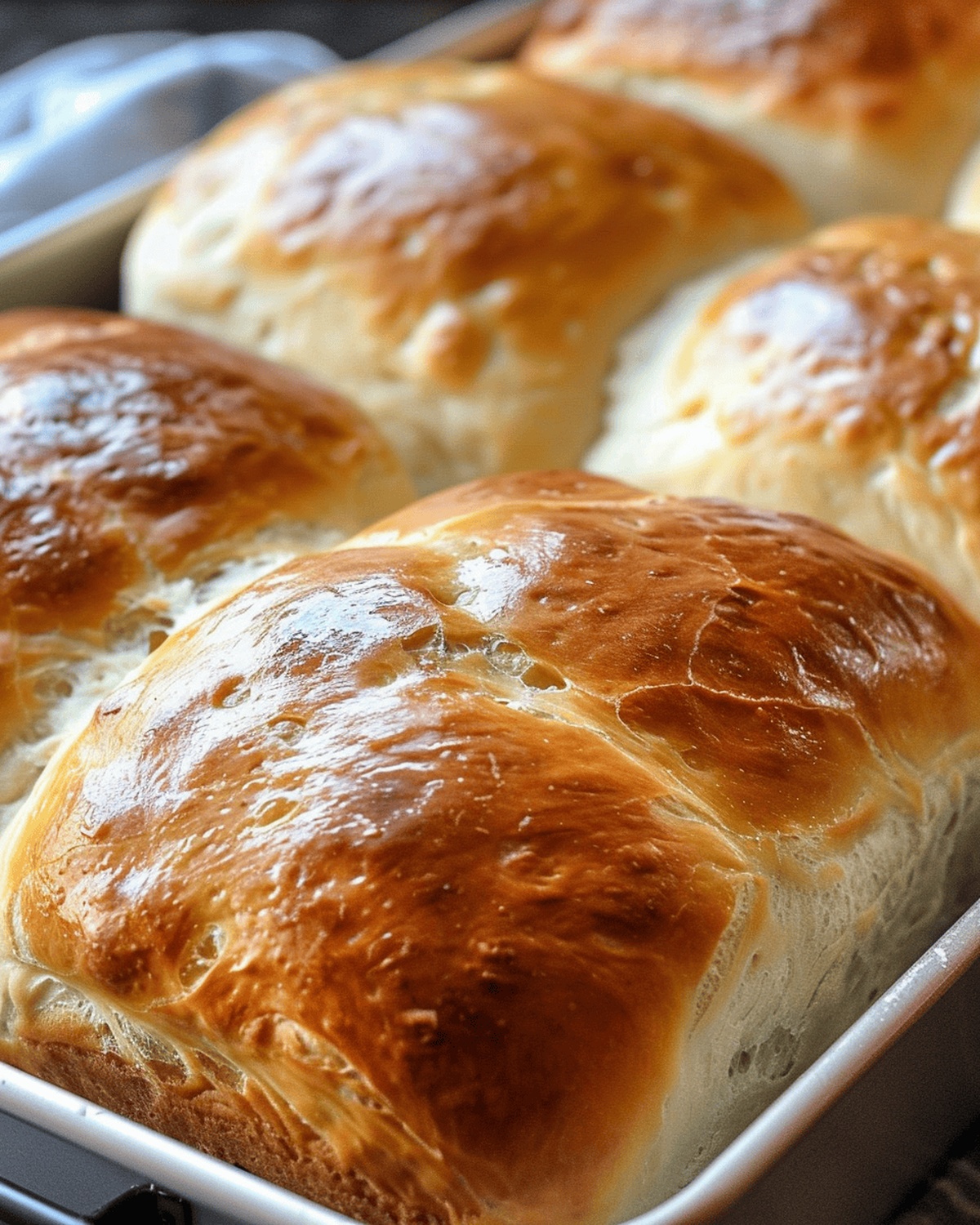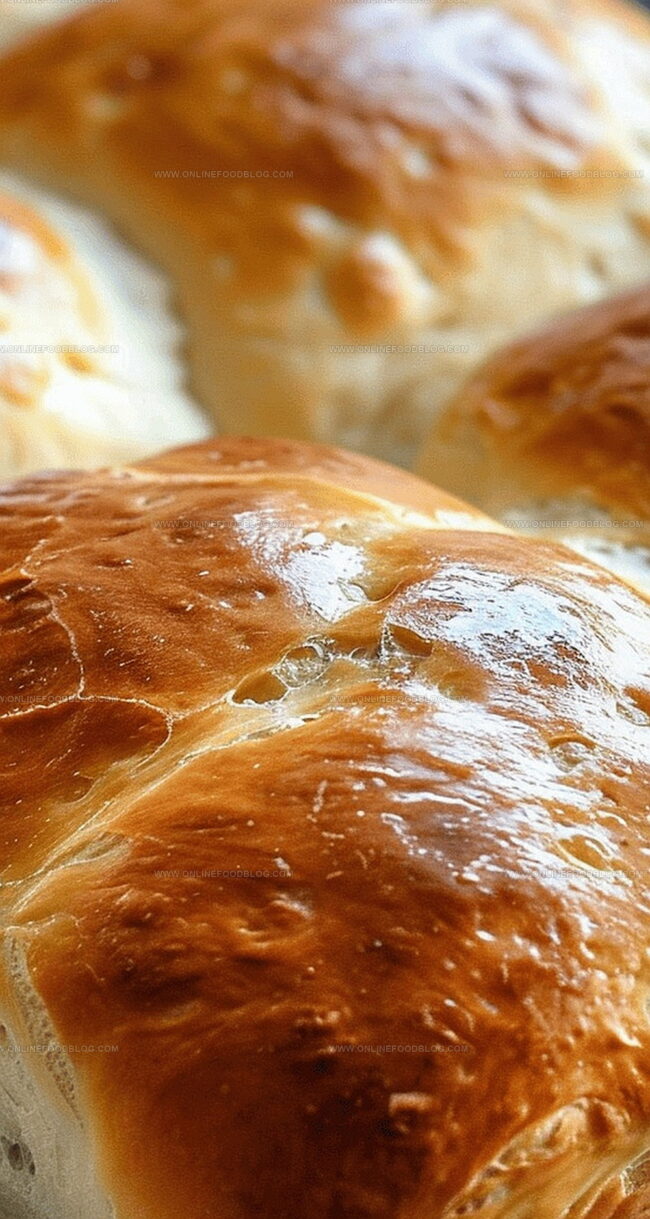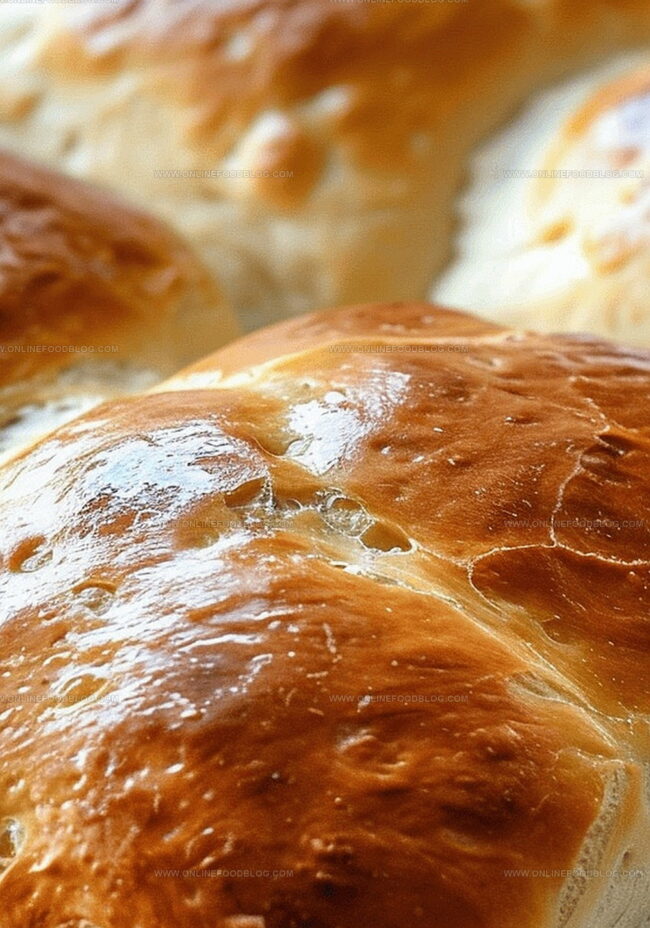Quick & Fluffy Homemade Buttery White Bread Recipe for Beginners
Buttery white bread crafts ordinary meals into extraordinary culinary experiences.
Soft, pillowy textures promise comfort with every delectable slice.
Home bakers dream of creating this classic staple that fills kitchens with warmth and nostalgia.
Rich golden crusts hint at the tender, moist interior waiting to be savored.
Crafting this beloved recipe requires simple ingredients and careful technique that elevate basic components into something magical.
Gentle kneading and patient rising times unlock deep flavors and irresistible aromas that beckon family and friends.
The magic of homemade bread connects generations through its timeless, nurturing essence.
Why Homemade Buttery White Bread is a Must-Try
Ingredients for Homemade Buttery White Bread
Dry Ingredients:Wet Ingredients:Preparation Components:Making Homemade Buttery White Bread
Step 1: Gather Dry Ingredients
Collect flour, salt, and active dry yeast in a large mixing bowl. Whisk them together thoroughly to create a uniform dry mixture.
Step 2: Prepare Liquid Base
Warm water to a comfortable temperature. Melt butter completely and mix it into the warm water, creating a rich, smooth liquid blend.
Step 3: Create Dough Foundation
Pour the buttery liquid into the dry ingredients. Mix carefully until a soft, cohesive dough forms. Avoid overmixing to keep the texture light and tender.
Step 4: Knead With Love
Transfer dough to a lightly floured surface. Knead the dough for 5-7 minutes, working it until smooth and elastic. This develops the bread’s structure and texture.
Step 5: First Rise
Place dough in a greased bowl. Cover with a clean kitchen towel or plastic wrap. Let it rest in a warm spot for about 1 hour, or until the dough doubles in size.
Step 6: Shape The Loaves
Gently deflate the risen dough by pressing down. Divide into 2 equal portions. Shape each portion into a smooth loaf, tucking edges underneath for a neat appearance.
Step 7: Prepare For Baking
Place shaped loaves into greased 9×5-inch loaf pans. Cover and let rise again for 30 minutes until the dough looks puffy and increased in volume.
Step 8: Bake To Golden Perfection
Preheat oven to 375°F. Bake loaves for 30-35 minutes until:Step 9: Cool And Enjoy
Remove bread from oven. Let loaves rest in pans for 10 minutes. Transfer to a wire rack to cool completely. Slice and savor the warm, buttery goodness!
Tips for Perfect Homemade Buttery White Bread
Storing and Reheating Homemade Buttery White Bread
Pairing Homemade Buttery White Bread
Homemade Buttery White Bread Variations
Print
Homemade Buttery White Bread Delight Recipe
- Total Time: 1 hour 5 minutes
- Yield: 12 1x
Description
Homemade Buttery White Bread Delight offers a comforting slice of pure warmth from traditional baking techniques. Pillowy layers of golden-brown crust and tender crumb invite home bakers to savor each delectable bite of this classic bread recipe.
Ingredients
Main Ingredients:
- 3.25 cups (780 ml) all-purpose flour
- 1 packet (7 grams) or 2.25 teaspoons active dry yeast
- 1 cup (240 ml) warm water
Flavor Enhancers:
- 0.25 cup (60 ml) unsalted butter, at room temperature
Seasoning:
- 1 teaspoon (5 ml) salt
Instructions
- Craft the dry foundation by thoroughly whisking flour, salt, and active dry yeast in a spacious mixing bowl, ensuring uniform distribution of ingredients.
- Create a luxurious liquid base by gently blending room-temperature melted butter with warm water (110°F to 115°F / 43°C to 46°C), which will contribute to the bread’s rich, tender crumb.
- Gradually incorporate the buttery liquid into the flour mixture, stirring methodically until a shaggy, cohesive dough emerges, being careful to avoid excessive manipulation.
- Transfer the nascent dough onto a lightly floured surface and embark on a rhythmic kneading process for 6 to 8 minutes, developing gluten strands that will provide structural integrity and delightful elasticity.
- Nestle the kneaded dough into a generously greased large bowl, drape with a clean kitchen towel, and position in a draft-free, warm environment for approximately 60 to 75 minutes until the volume doubles.
- Deflate the risen dough with gentle punches, then partition into two equal segments, carefully molding each into a smooth, elongated loaf that fits perfectly in greased 9-inch by 5-inch (23-centimeter by 13-centimeter) loaf pans.
- Allow the shaped loaves a second proofing period, covered, for 35 to 45 minutes, creating an airy, pillowy texture.
- Preheat the oven to 375°F (190°C), positioning the rack in the center, and bake the loaves for 32 to 38 minutes until they achieve a golden-amber crust and sound hollow when tapped.
- Extract the baked loaves and permit them to rest in the pans for 12 minutes before transferring to a wire cooling rack, allowing complete cooling for optimal slicing and maximum flavor development.
Notes
- Butter enhances the bread’s richness, creating a moist and tender crumb that melts in your mouth with every delightful bite.
- Proper kneading develops gluten networks, transforming a sticky mixture into a smooth, elastic dough that promises a perfect rise and airy texture.
- Room temperature ingredients ensure consistent mixing and optimal yeast activation, preventing potential temperature-related baking mishaps.
- Rising times are crucial for developing complex flavors and achieving that signature soft, pillowy bread texture that makes homemade loaves irresistible.
- A golden-brown crust signals perfectly baked bread, indicating a crisp exterior that contrasts beautifully with the soft, tender interior.
- Cooling allows the bread’s internal structure to set, preventing a gummy texture and ensuring clean, beautiful slices every time.
- Prep Time: 25 minutes
- Cook Time: 40 minutes
- Category: Breakfast, Lunch, Dinner, Snacks
- Method: Baking
- Cuisine: American
Nutrition
- Serving Size: 12
- Calories: 180 kcal
- Sugar: 0.5 g
- Sodium: 150 mg
- Fat: 6 g
- Saturated Fat: 3.5 g
- Unsaturated Fat: 2 g
- Trans Fat: 0 g
- Carbohydrates: 27 g
- Fiber: 1 g
- Protein: 4 g
- Cholesterol: 15 mg




Lucas Bennett
Founder & Recipe Creator
Expertise
Simple Everyday Recipes, Sustainable Cooking Practices, Creative Meal Planning, Recipe Testing and Improvement
Education
Fox Valley Technical College, Appleton, Wisconsin
Lake Superior College, Duluth, Minnesota
Lucas Bennett’s cooking journey started in his parents’ kitchen, where he learned to prepare tasty, no-fuss meals from scratch. His culinary passion led him to Fox Valley Technical College, where he gained practical cooking skills.
He then expanded his focus on sustainability at Lake Superior College. Today, Lucas shares easy, approachable recipes designed to make cooking enjoyable and stress-free for everyone.